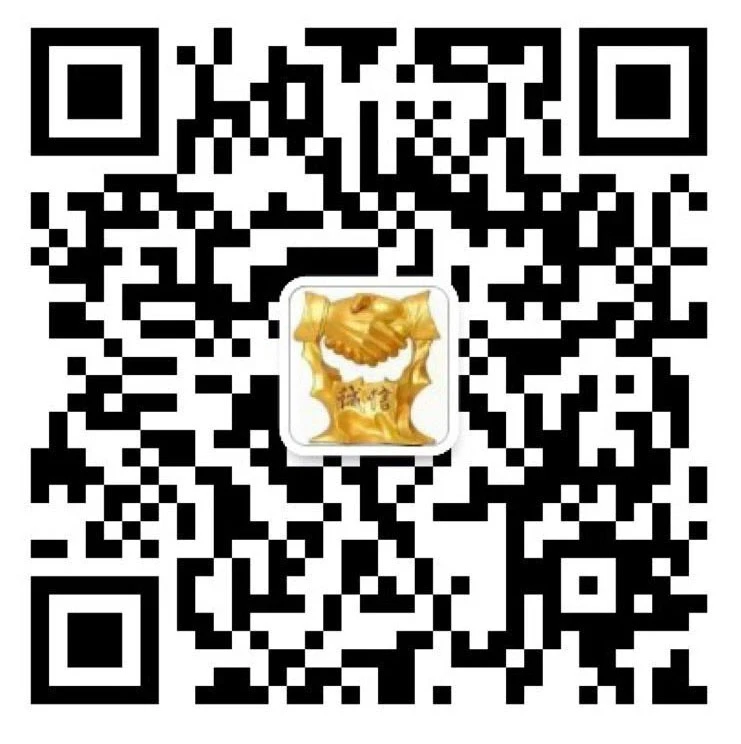-
+86 15030157877
-
sales@galvanizedmetalmesh.com
Aug . 08, 2025 02:00 Back to list
Artificial Grass Fence: Privacy, Beauty & Low Maintenance
In an increasingly urbanized world, the demand for green, aesthetically pleasing, and low-maintenance solutions for property enhancement and privacy is surging. Among these, the Artificial Grass Fence has emerged as a revolutionary product, blending the natural beauty of real grass with the enduring strength and privacy of a fence. This detailed guide explores the nuances of this innovative product, from its cutting-edge manufacturing processes to its diverse applications and unparalleled benefits.
The Growing Trend of Artificial Grass Fence in Modern Landscaping
The global landscaping and gardening market is witnessing a significant shift towards sustainable, low-resource solutions. As urban areas expand, the need for green spaces that require minimal water and upkeep becomes paramount. The Artificial Grass Fence perfectly addresses this need. Market research indicates a compound annual growth rate (CAGR) of approximately 4.5% for the artificial turf market from 2021 to 2028, with aesthetic and privacy-focused applications like fences being a key driver. This growth is fueled by:
- Urbanization and Space Constraints: In dense cities, traditional hedges take up valuable ground space and require extensive care.
- Water Scarcity: Drought conditions and water conservation efforts make natural grass alternatives highly attractive.
- Low Maintenance Appeal: Busy lifestyles demand solutions that save time and money on gardening.
- Year-Round Aesthetics: Maintaining a vibrant green appearance regardless of climate or season.
- Enhanced Privacy and Security: Offering a dense, opaque barrier that deters unwanted views and intrusions.
From residential backyards seeking a touch of evergreen charm to commercial properties requiring instant visual appeal and sound dampening, the versatility of Artificial Grass Fence is undeniable.
Unveiling the Craftsmanship: Manufacturing Process of Artificial Grass Fence
The durability, aesthetic appeal, and longevity of an Artificial Grass Fence are direct results of a sophisticated manufacturing process that combines advanced materials with precision engineering. The core of this product is typically a galvanized steel mesh, which provides structural integrity, while the exterior is meticulously designed to mimic natural grass. Here's a breakdown of the typical manufacturing workflow:

1. Material Sourcing & Preparation
The process begins with selecting high-grade raw materials. For the core mesh, this usually involves low-carbon steel wire that undergoes hot-dip galvanization (conforming to ASTM A123 or equivalent ISO standards) to provide superior corrosion resistance. The artificial grass strands are typically made from UV-stabilized polyethylene (PE) or polypropylene (PP) polymers, chosen for their excellent resistance to fading, degradation, and environmental factors. These polymers are blended with masterbatches containing UV inhibitors and color pigments.
2. Wire Drawing & Straightening
The galvanized steel wire coils are unspooled, drawn to the precise required diameter (e.g., 2.0mm to 5.0mm, depending on desired rigidity), and then straightened using automated machinery. This ensures uniform wire tension and prepares it for the mesh formation stage.
3. Mesh Weaving or Welding (Core Formation)
The straightened galvanized wires are then fed into specialized machinery. Depending on the desired mesh type, it can be:
- Welded Wire Mesh: Wires are precision spot-welded at their intersections to form a rigid grid structure. This method provides high strength and consistent mesh opening sizes.
- Woven Wire Mesh: Wires are interwoven (like chain link) to create a flexible yet robust mesh. This is less common for the rigid Artificial Grass Fence panel but can be used for rolls.
4. Polymer Extrusion & Yarn Production
Simultaneously, the UV-stabilized PE/PP pellets are melted and extruded through a die to form continuous strands (yarns) that resemble natural grass blades. These yarns are then cooled, stretched to achieve desired tensile strength (e.g., typically 30-50 N/mm²), and spooled onto bobbins. The stretching process aligns the polymer molecules, enhancing durability and resilience. This is a critical step for ensuring the "grass" retains its shape and color.
5. Grass Weaving/Attachment to Mesh
The artificial grass yarns are then meticulously woven or attached onto the galvanized steel mesh core. This is often done using specialized machinery that intertwines the grass strands through the mesh openings, creating a dense, opaque layer. The method ensures a strong bond between the grass and the mesh, preventing shedding or unraveling over time. Some manufacturers may use adhesive bonding for added security.
6. Finishing, Trimming & Quality Control
Once the grass is attached, the panels undergo finishing touches, including precise trimming to ensure uniform height and density. A rigorous quality control (QC) process is then implemented. This includes visual inspections for uniformity, color consistency, and defects. More importantly, it involves performance testing:
- UV Resistance Test: Accelerated weathering tests (e.g., ASTM G155, ISO 4892) to simulate prolonged sun exposure and confirm colorfastness and material degradation resistance.
- Tensile Strength Test: Measuring the breaking strength of both the steel mesh and the grass fibers.
- Fire Retardancy Test: Ensuring the grass material meets safety standards like UL94 or equivalent European norms (e.g., EN 13501-1 Class E/F) if specified.
- Adhesion Test: If adhesives are used, testing the bond strength between grass and mesh.
7. Packaging & Shipping
Finally, the finished Artificial Grass Fence panels are carefully packaged to prevent damage during transit, often using protective wraps and pallets. They are then ready for shipment to various global markets.
This meticulous process ensures that the final Artificial Grass Fence product offers exceptional durability, aesthetic appeal, and long-term performance, typically boasting a lifespan of 7-10 years or even more under normal conditions, largely due to its UV-stabilized polymers and galvanized steel core.
Key Technical Parameters and Specifications
Understanding the technical specifications of an Artificial Grass Fence is crucial for making informed decisions. These parameters dictate the fence's performance, durability, and suitability for various applications. Here's a table outlining common specifications:
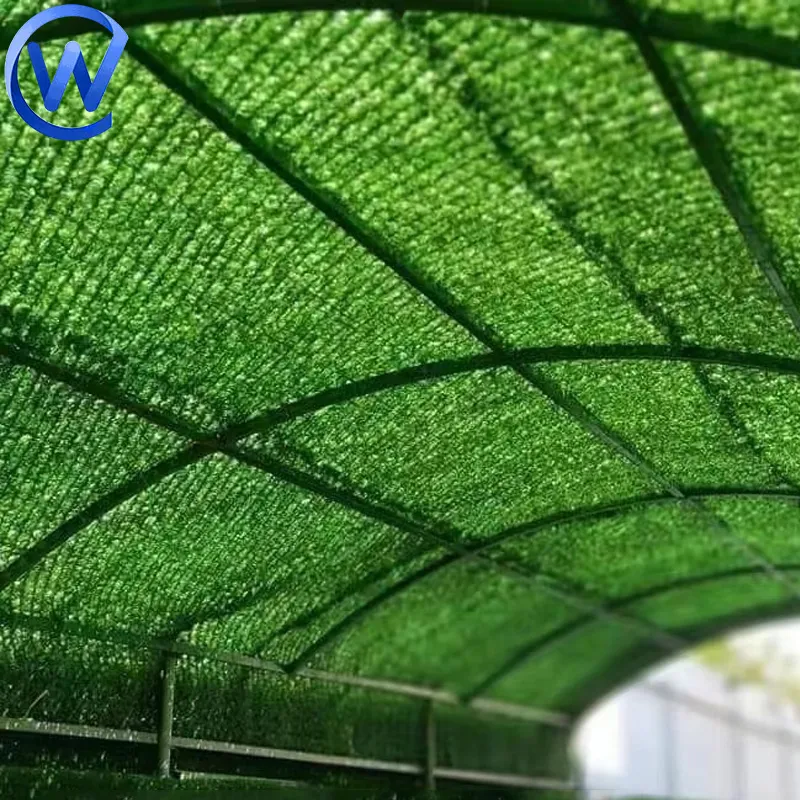
| Parameter | Description | Typical Range/Value | Relevant Standard/Notes |
|---|---|---|---|
| Core Mesh Material | High-quality steel wire, hot-dip galvanized for corrosion resistance. | Low Carbon Steel, Galvanized | ASTM A123 / ISO 1461 (Galvanization) |
| Wire Diameter | Thickness of the steel wires forming the mesh core. | 2.0 mm - 5.0 mm | Thicker wire implies greater rigidity and strength. |
| Mesh Opening Size | Dimensions of the grid openings in the steel mesh. | 5x5 cm to 15x15 cm | Affects overall rigidity and ease of grass attachment. |
| Grass Blade Material | Polymer used for artificial grass strands. | UV-Stabilized PE (Polyethylene) or PP (Polypropylene) | Key for color retention and longevity. |
| Grass Density | Number of grass stitches or tufts per unit area (e.g., per square meter). | 10,000 - 25,000 stitches/m² | Higher density provides more privacy and a fuller look. |
| Grass Pile Height | Length of the artificial grass blades. | 5 cm - 15 cm | Affects aesthetics and perceived lushness. |
| UV Resistance | Ability to resist degradation and fading from sunlight. | 5,000 - 10,000 hours (Xenon Arc exposure) | ASTM G155 / ISO 4892-2 (Accelerated Weathering) |
| Fire Retardancy | Product's resistance to ignition and flame spread. | Class E / Bfl-s1 (European), UL94 V-2/HB (US) | Crucial for safety, especially in public areas. |
| Temperature Range | Operating temperature limits for the product. | -30°C to +60°C | Ensures performance in diverse climates. |
| Product Lifespan | Expected functional life under normal conditions. | 7 - 10+ years | Dependent on material quality and environmental exposure. |
| Panel Dimensions | Standard height and length of fence panels. | Height: 1.0 m - 2.5 m; Length: 2.0 m - 10.0 m (rolls) | Custom sizes often available. |
| Color Options | Available shades of green for the grass blades. | Various shades of natural green (e.g., olive, lime, forest) | Mimics natural grass diversity. |
These specifications highlight the commitment to quality and performance, ensuring that each Artificial Grass Fence delivers on its promise of durability, aesthetics, and functionality.
Diverse Application Scenarios of Artificial Grass Fence
The versatility of Artificial Grass Fence extends across a multitude of environments, offering tailored solutions for privacy, aesthetics, and demarcation. Its robust construction and natural appearance make it suitable for diverse sectors, from individual homes to large-scale commercial and public projects.
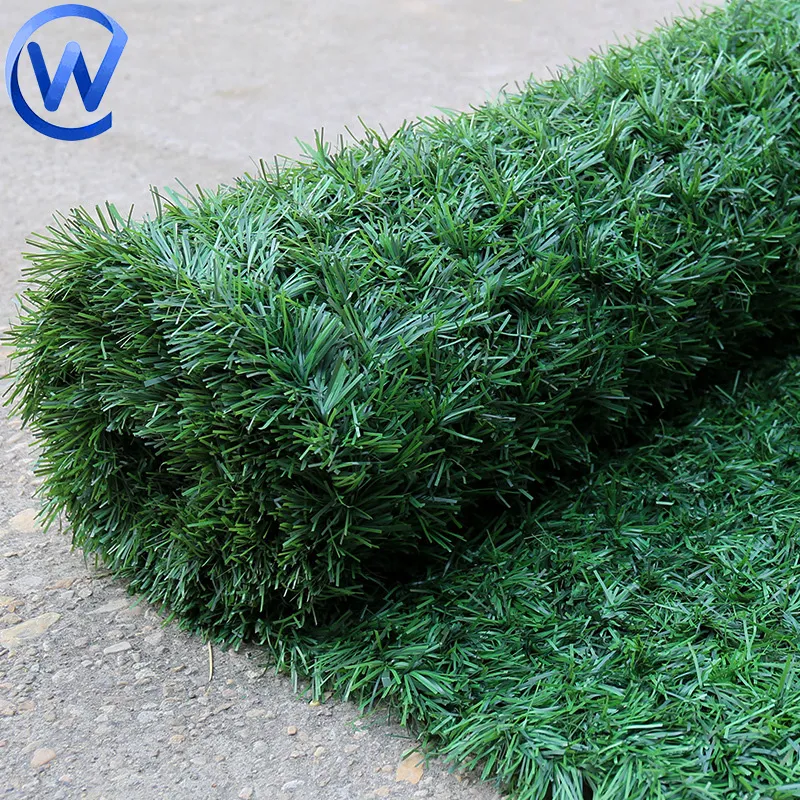
Residential Applications: Enhancing Home Privacy and Curb Appeal
For homeowners, Artificial Grass Fence is an ideal choice for transforming backyards, balconies, and pool areas into serene, private retreats. Its dense foliage effectively blocks unwanted views from neighbors or busy streets, offering a sense of seclusion. Unlike natural hedges, it provides instant privacy upon installation and maintains its vibrant green look year-round without the need for trimming, watering, or pest control. This makes it perfect for:
- Backyard Fencing: Creating a lush, private boundary.
- Balcony & Terrace Screening: Adding greenery and privacy to elevated spaces.
- Pool Enclosures: Offering a soft, natural backdrop that complements water features.
- Garden Walls: Covering unsightly walls or existing fences with a green facade.
Commercial Applications: Branding, Aesthetics, and Security
Businesses leverage Artificial Grass Fence for its aesthetic appeal and practical benefits. It enhances curb appeal, creates inviting outdoor spaces, and can even contribute to a company's green image. Its sound-dampening qualities can be beneficial in noisy commercial areas. Common commercial uses include:
- Restaurant & Cafe Patios: Defining outdoor dining areas and providing a pleasant ambiance.
- Office Building Perimeters: Creating an attractive, low-maintenance green boundary.
- Retail Storefronts: Enhancing visual merchandising and creating a welcoming facade.
- Hotel & Resort Landscaping: Adding luxury and privacy to outdoor guest areas.
Public & Municipal Spaces: Durable and Eco-Friendly Solutions
Public sector projects demand durability, safety, and minimal maintenance. Artificial Grass Fence excels in these aspects, providing long-lasting green solutions without the high resource consumption of natural landscaping.
- Parks and Recreational Areas: Defining play zones, sports fields, or public seating areas.
- Roadside Noise Barriers: Contributing to noise reduction and visual improvement along busy roads.
- Temporary Event Fencing: Offering an attractive and secure solution for festivals, concerts, or construction sites (easy to install and remove).
- Schools and Kindergartens: Creating safe, green boundaries for playgrounds and outdoor learning areas.
Specialized Applications: Beyond Traditional Fencing
The adaptability of Artificial Grass Fence also allows for creative, specialized applications:
- Sports Field Dividers: Providing aesthetic and functional separation for different sports zones.
- Construction Site Hoardings: Transforming unsightly construction barriers into green walls.
- Animal Enclosures: Creating safe and visually appealing boundaries for pets or farm animals (with appropriate height and strength considerations).
Technical Advantages of Artificial Grass Fence
Beyond its aesthetic appeal, the Artificial Grass Fence offers a host of technical advantages that make it a superior choice over traditional fencing or natural hedges. These benefits stem from its engineered design and choice of high-quality materials.
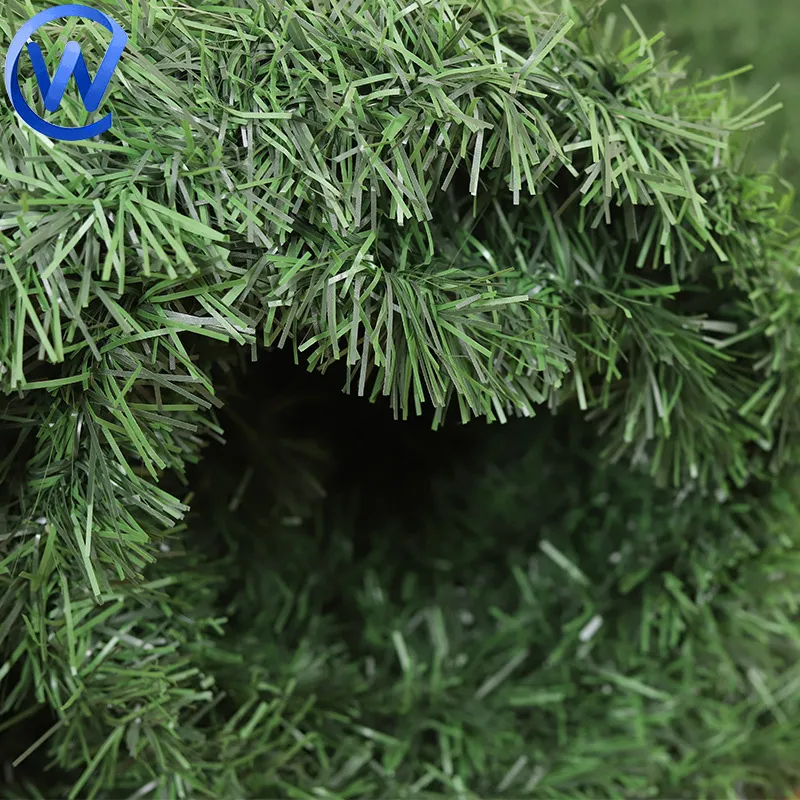
1. Exceptional Durability and Longevity
The foundation of the Artificial Grass Fence is a galvanized steel mesh, renowned for its resistance to corrosion and rust. The galvanization process, typically hot-dip galvanization conforming to ISO 1461, provides a robust zinc coating that acts as a sacrificial barrier against environmental elements. This ensures the structural integrity of the fence for many years, even in harsh weather conditions (rain, snow, humidity). Furthermore, the artificial grass itself is made from UV-stabilized polyethylene (PE) or polypropylene (PP), specifically engineered to resist fading and degradation from prolonged sun exposure. This UV resistance is crucial, extending the product's vibrant green appearance and structural integrity for typically 7 to 10+ years, far outperforming natural alternatives that can brown, wither, or require constant care.
2. Superior Privacy and Aesthetic Appeal
One of the primary advantages is the immediate and complete privacy it offers. Unlike natural hedges that take years to grow and can be susceptible to gaps or seasonal changes, the Artificial Grass Fence needs virtually no upkeep. This translates into significant savings in water bills, gardening tools, chemicals, and labor costs over its lifespan. A simple rinse with water is often enough to keep it clean, making it an economically sound and eco-friendly choice.
4. Environmental Adaptability and Weather Resistance
Designed to perform in diverse climates, Artificial Grass Fence is remarkably resilient to extreme weather. Its UV-stabilized materials prevent sun damage and color fading, while its galvanized steel core ensures it withstands strong winds, heavy rain, snow, and ice without warping or corroding. This makes it a reliable solution for regions experiencing variable weather conditions, from arid deserts to snowy winters, maintaining its structural integrity and aesthetic appeal year after year.
5. Enhanced Safety and Acoustic Properties
For applications where safety is a concern, many high-quality Artificial Grass Fence products are manufactured with fire-retardant additives, meeting international safety standards such as UL94 (for material flammability) or relevant European fire classification norms (e.g., EN 13501-1). This reduces fire risk, especially in densely populated areas or commercial settings. Additionally, the dense structure of the artificial grass blades can provide a degree of sound absorption, contributing to a quieter environment by dampening ambient noise, making it beneficial for urban gardens or properties adjacent to busy roads.
6. Eco-Friendly Aspects and Sustainability
While often viewed as "artificial," the Artificial Grass Fence contributes to environmental sustainability in several ways. It eliminates the need for vast amounts of water (critical in drought-prone areas), harmful pesticides, and chemical fertilizers often associated with natural landscaping. Furthermore, many manufacturers are increasingly using recycled materials in their production processes, and the product itself can be recycled at the end of its long lifespan, reducing landfill waste. Its low carbon footprint during its service life (due to reduced maintenance equipment use) makes it a viable green alternative.
These technical merits underscore why Artificial Grass Fence is not just a cosmetic upgrade but a practical, long-term investment that offers superior performance, cost-effectiveness, and environmental responsibility compared to traditional fencing and landscaping options.
Choosing Your Partner: Manufacturer Comparison and Selection Criteria
Selecting the right manufacturer for your Artificial Grass Fence is as crucial as the product itself. A reputable manufacturer ensures quality, adherence to standards, and reliable customer support. When evaluating potential suppliers, consider the following:
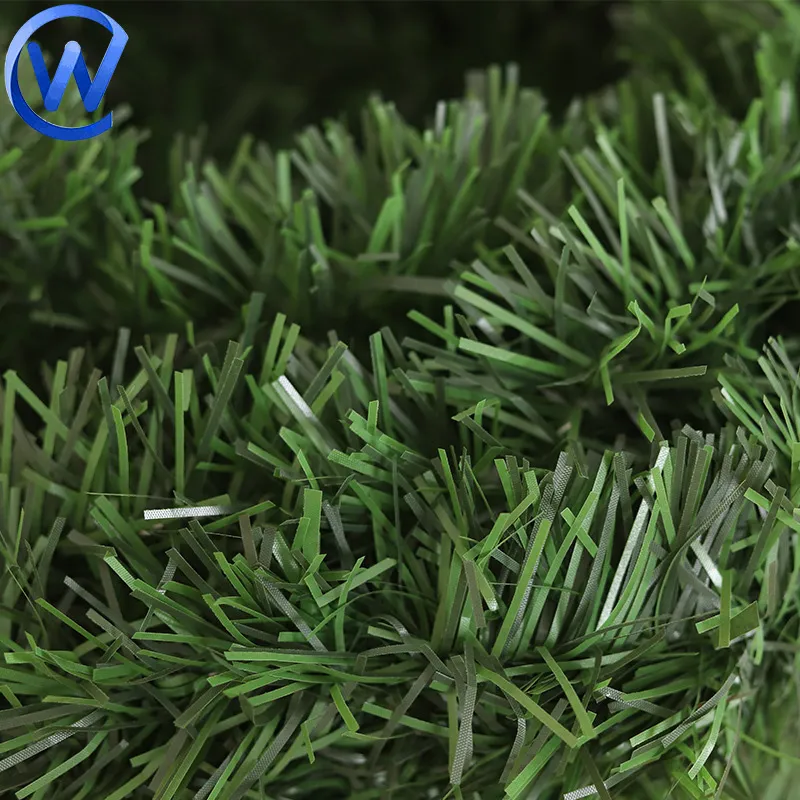
Key Evaluation Criteria:
- Certifications and Quality Control: Look for manufacturers holding ISO 9001 (Quality Management System) and ISO 14001 (Environmental Management System) certifications. This indicates a commitment to consistent quality and responsible production. Verify if their products meet specific material standards like ASTM for galvanization or UV resistance.
- Experience and Reputation: A manufacturer with extensive experience in the fencing or artificial turf industry (e.g., 10+ years in operation) often implies a deeper understanding of product design, manufacturing nuances, and customer needs. Check for industry accolades, positive customer reviews, and case studies.
- Material Quality & Source: Inquire about the origin and quality of raw materials (galvanized steel, PE/PP polymers, UV stabilizers). Reputable manufacturers source from certified suppliers, ensuring superior product performance and longevity.
- R&D and Innovation: Leading manufacturers invest in research and development to improve product features, such as enhanced UV protection, fire retardancy, or more realistic grass textures.
- Customization Capabilities: Can they offer different heights, lengths, colors, or grass densities to meet specific project requirements?
- Warranty and After-Sales Support: A strong warranty (e.g., 5-10 years against UV degradation and material defects) demonstrates confidence in their product. Assess their responsiveness and support channels for technical assistance or issue resolution.
- Sustainability Practices: If environmental impact is a concern, ask about their use of recycled materials, energy efficiency in manufacturing, and end-of-life recycling programs for their products.
- Pricing vs. Value: While cost is a factor, prioritize value. A slightly higher initial investment in a quality product can lead to significant savings in maintenance and replacement costs over its longer lifespan.
Hypothetical Manufacturer Comparison Table (Illustrative)
| Feature/Criteria | Manufacturer A (Premium) | Manufacturer B (Mid-Range) | Manufacturer C (Budget) |
|---|---|---|---|
| Core Mesh Material | Hot-Dip Galvanized Steel (4.0mm wire) | Electro-Galvanized Steel (3.0mm wire) | Pre-Galvanized Steel (2.5mm wire) |
| Grass Material | High-Grade UV-Stabilized PE (10,000hr+ UV rating) | UV-Stabilized PP (7,000hr UV rating) | Basic PE (5,000hr UV rating) |
| Warranty (Grass) | 10 Years (UV degradation) | 7 Years (UV degradation) | 5 Years (limited) |
| Certifications | ISO 9001, ISO 14001, UL94, ASTM G155 | ISO 9001, basic CE | None specified |
| Customization | Full (Height, Length, Density, Color) | Standard sizes + basic custom lengths | Limited to standard sizes |
| Lead Time | 2-3 Weeks | 3-4 Weeks | 4-6 Weeks |
| Price Point (per meter) | $$$ | $$ | $ |
| Technical Support | Dedicated Account Manager, Online Portal | Email/Phone Support | Limited Email Support |
This comparison illustrates how choosing a manufacturer with higher standards in materials, certifications, and support can lead to a more durable and satisfying investment in an Artificial Grass Fence. While budget options exist, they often come with trade-offs in longevity and performance.
Tailored Solutions: Customization Options for Artificial Grass Fence
Every project has unique requirements, and the flexibility of Artificial Grass Fence allows for extensive customization to meet specific aesthetic and functional needs. Leading manufacturers offer a range of options, ensuring the final product seamlessly integrates with your vision.
1. Dimensions: Height and Length
While standard panel sizes are common (e.g., 1m, 1.5m, 2m in height; 2.5m, 3m in length), reputable suppliers provide custom cutting or manufacturing to precise dimensions. This is particularly valuable for unique property lines, specific privacy requirements, or integrating the fence with existing structures. For long stretches, continuous rolls can also be supplied, minimizing seams and installation time.
2. Grass Density and Pile Height
The "lushness" of the Artificial Grass Fence can be customized by varying the density of the artificial grass blades (stitches per square meter) and their pile height (blade length).
- Higher Density: Offers maximum privacy and a very full, opaque look. Ideal for areas requiring absolute seclusion or sound dampening.
- Lower Density: Provides a slightly more open feel while still offering significant screening. Can be more cost-effective.
- Pile Height: Shorter blades (e.g., 5-8 cm) give a neatly trimmed appearance, while longer blades (e.g., 10-15 cm) create a wilder, more natural, meadow-like look.
3. Color and Texture Variations
Beyond a single shade of green, manufacturers often offer a palette of greens to mimic various natural grass types and seasonal variations. This can include:
- Olive Green: A darker, richer shade often associated with mature grass.
- Lime Green: A brighter, fresher shade, akin to new spring growth.
- Multi-Tone Blends: Combining different shades of green, sometimes with hints of brown or yellow, to create a highly realistic, variegated appearance.
4. Core Mesh Specifications
While galvanized steel is standard, specific projects might require variations in wire gauge (thickness) for enhanced strength or specific mesh opening sizes for aesthetic reasons or ease of installation. For extreme environments, specialized coatings (e.g., PVC coating over galvanization) can be applied to the steel core for extra protection against chemicals or abrasion.
5. Integrated Features
Some advanced customization options include:
- Integrated Lighting: Pre-installed LED lighting strips or discreet spotlights to illuminate the fence at night, enhancing ambiance and security.
- Accessory Compatibility: Designing the fence to easily accommodate additional elements like decorative panels, security cameras, or signage.
- Custom Branding: For commercial clients, incorporating company logos or specific color schemes into the fence design.
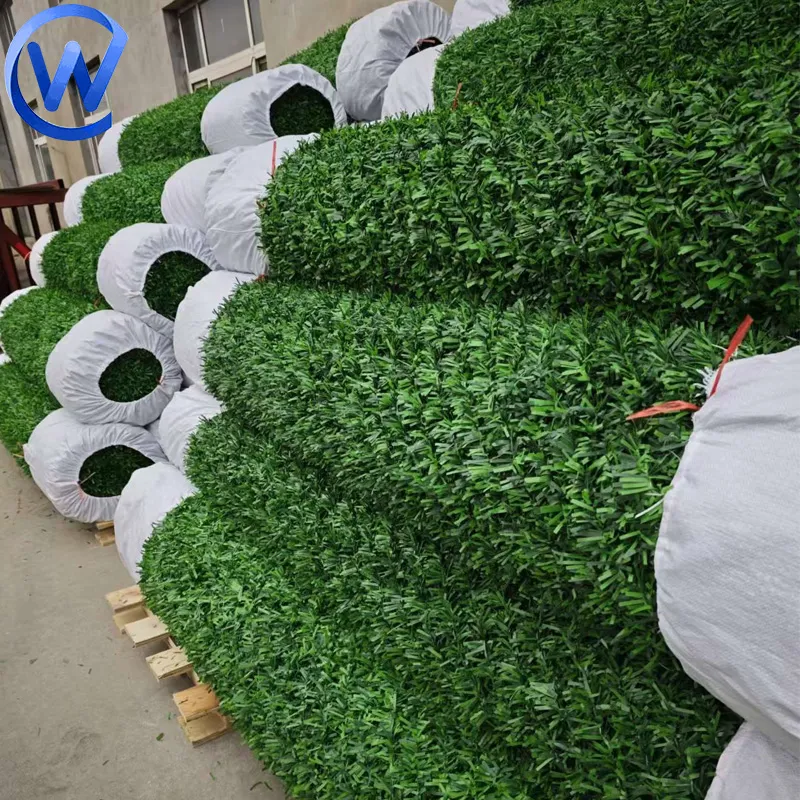
By offering these extensive customization capabilities, manufacturers empower clients to create a truly bespoke Artificial Grass Fence solution that perfectly aligns with their design intent and functional requirements, ensuring maximum satisfaction and optimal integration with the surrounding environment.
Real-World Impact: Application Cases and Client Testimonials
The practical benefits of Artificial Grass Fence are best demonstrated through its successful implementation in various projects. These case studies highlight its versatility, effectiveness, and the positive impact it has on properties and their inhabitants.
Case Study 1: Urban Residential Privacy Solution
Client: Mr. & Mrs. Sharma, Homeowners in a densely populated suburban area.
Challenge: Their backyard was overlooked by multi-story apartment buildings, offering minimal privacy. Traditional hedges would take years to grow and require constant trimming.
Solution: Installation of a 2-meter high, 15-meter long Artificial Grass Fence with high grass density along the property line. The fence was selected for its immediate privacy, lush appearance, and zero maintenance.
Outcome: "We are absolutely thrilled with our Artificial Grass Fence! It instantly transformed our backyard into a private oasis. We can now enjoy our garden without feeling exposed, and the vibrant green adds so much life to the space, all year round. The installation was quick, and it looks incredibly natural. Best decision we made for our home," says Mrs. Sharma.
Case Study 2: Commercial Property Aesthetic Upgrade
Client: "Green Oasis Cafe," a popular outdoor cafe in a commercial district.
Challenge: The cafe's outdoor seating area was adjacent to a busy street, suffering from noise pollution and an unappealing concrete barrier.
Solution: A 1.8-meter high Artificial Grass Fence was installed along the street-facing perimeter. The fence was chosen not only for its visual appeal but also for its potential sound-dampening qualities and durability in a high-traffic urban environment.
Outcome: The cafe reported a significant improvement in ambiance. "Our customers love the new green wall! It's made the patio feel much more secluded and inviting. We've even noticed a slight reduction in street noise, which is a huge bonus. It's truly maintenance-free, allowing us to focus on our business," commented the cafe manager. The visual upgrade led to an increase in foot traffic and positive online reviews highlighting the attractive outdoor seating.
Case Study 3: Public School Playground Safety & Aesthetics
Client: "Maplewood Elementary School" district.
Challenge: The existing chain-link fence around the school playground was unsightly and offered no privacy, making the play area feel exposed. Concerns about child safety from external views were also present.
Solution: Replacement of the old fence with a 2.2-meter high Artificial Grass Fence. The school specifically requested fire-retardant materials and robust construction for child safety and long-term durability.
Outcome: "The new Artificial Grass Fence has been a fantastic addition to our school. The playground now feels safer and more secluded, providing a better play environment for our students. The green color is vibrant and aesthetically pleasing, significantly improving the school's overall appearance. The zero maintenance is also a huge plus for our budget," stated the school principal. The fence provided instant greening without the worry of allergies or pests associated with real plants.
These cases exemplify how Artificial Grass Fence delivers tangible benefits, proving its value as a versatile and high-performance solution for various applications.
Trustworthiness: FAQ, Delivery, Warranty & Support
Building trust with customers involves transparency, clear communication, and robust support systems. Here, we address common questions, outline our commitment to timely delivery, explain our quality assurance, and detail our customer support.

Frequently Asked Questions (FAQ) about Artificial Grass Fence:
Q1: Is Artificial Grass Fence durable enough for extreme weather?
A1: Yes, absolutely. Our Artificial Grass Fence is built on a galvanized steel mesh core, offering excellent rust and corrosion resistance. The artificial grass blades are made from UV-stabilized PE/PP polymers, specifically designed to withstand prolonged exposure to sunlight, heavy rain, snow, and extreme temperatures (typically -30°C to +60°C) without fading or deteriorating. It’s engineered for long-term outdoor performance.
Q2: How long does Artificial Grass Fence typically last?
A2: With proper installation and minimal care, a high-quality Artificial Grass Fence is expected to last 7 to 10+ years. The longevity is largely attributed to the quality of the UV stabilizers in the grass blades and the superior corrosion protection of the galvanized steel core, both of which are critical for resisting environmental degradation.
Q3: Is the Artificial Grass Fence fire resistant?
A3: Our premium Artificial Grass Fence products are treated with fire-retardant additives during the manufacturing process. This ensures they meet relevant international safety standards such as UL94 (for plastic material flammability) or European fire classification norms (e.g., EN 13501-1 Class E). While not completely fireproof, they are designed to inhibit flame spread, enhancing safety.
Q4: How do I clean and maintain an Artificial Grass Fence?
A4: Maintenance is exceptionally low. For routine cleaning, a simple rinse with a garden hose to remove dust or debris is usually sufficient. For more stubborn dirt, a soft brush and mild soap solution can be used. Unlike natural hedges, it requires no watering, mowing, trimming, or chemical treatments, saving significant time and resources.
Q5: Can Artificial Grass Fence be customized?
A5: Yes, we offer extensive customization. You can specify the height, length, grass density (for desired privacy level), grass pile height, and even select from various shades of green or multi-tone blends to perfectly match your aesthetic preferences. We can also discuss custom mesh specifications or integrated features like lighting upon request.
Q6: What are the installation requirements for Artificial Grass Fence?
A6: The Artificial Grass Fence is designed for relatively straightforward installation. It typically involves securing the panels to existing fence posts, walls, or a newly constructed frame using clamps, ties, or screws. We provide detailed installation guides and can offer technical support or recommend professional installers for complex projects. The lightweight nature of the panels simplifies handling.
Q7: Is Artificial Grass Fence environmentally friendly?
A7: Our Artificial Grass Fence contributes to environmental sustainability by eliminating the need for water, pesticides, and fertilizers. While not natural, its long lifespan and recyclability of materials (galvanized steel and some polymers) at the end of its life cycle contribute to a reduced ecological footprint compared to the high resource consumption of natural landscaping requiring constant upkeep.
Delivery Cycle & Logistics:
Our standard production and delivery lead time for Artificial Grass Fence orders typically ranges from 2 to 4 weeks, depending on the order volume and customization requirements. For international shipments, transit times will vary based on destination and chosen shipping method (sea freight, air freight). We work with trusted logistics partners to ensure timely and secure delivery to your specified location. Expedited options may be available upon request for urgent projects.
Quality Assurance & Warranty:
We stand by the quality of our Artificial Grass Fence products. All materials and manufacturing processes adhere to stringent international standards (e.g., ISO 9001 for quality management, ASTM for material testing). Each batch undergoes rigorous quality control checks, including UV resistance, tensile strength, and colorfastness tests, before dispatch. We offer a comprehensive warranty ranging from 5 to 10 years (depending on the product series) against manufacturing defects and significant UV degradation, providing you with peace of mind and protecting your investment.
Customer Support:
Our dedicated customer support team is available to assist you throughout your journey, from initial inquiry to post-installation support. We offer:
- Pre-Sales Consultation: Expert advice on product selection, customization, and technical specifications to match your project needs.
- Technical Support: Assistance with installation guidelines, troubleshooting, and maintenance queries.
- After-Sales Service: Prompt handling of warranty claims and any post-purchase concerns.
Conclusion: The Future is Green and Maintenance-Free with Artificial Grass Fence
The Artificial Grass Fence stands as a testament to modern material science and innovative design, offering a compelling blend of aesthetics, privacy, and unparalleled durability. Its rise in popularity is not merely a trend but a reflection of a fundamental shift towards sustainable, low-maintenance, and visually appealing solutions for both residential and commercial landscapes. From enhancing urban aesthetics to providing critical privacy and noise reduction, its applications are as diverse as they are impactful.
By leveraging advanced UV-stabilized polymers and robust galvanized steel, the Artificial Grass Fence delivers a long-lasting, vibrant green barrier that requires minimal resources, saving water, time, and money. As cities grow and environmental concerns mount, this product will continue to be a cornerstone in creating smarter, greener, and more efficient outdoor spaces. Investing in an Artificial Grass Fence is not just about installing a barrier; it's about embracing a future where beauty and practicality coexist harmoniously, providing an evergreen solution that truly stands the test of time.
References & Further Reading:
- "Global Artificial Turf Market Size, Share & COVID-19 Impact Analysis, By Raw Material (Polyethylene, Polypropylene, Nylon), By Infill Material (Rubber, Sand, Others), By Application (Sports, Leisure & Landscaping), and Regional Forecast, 2021-2028." Fortune Business Insights. (Industry data for artificial turf market trends). https://www.fortunebusinessinsights.com/artificial-turf-market-106584
- "Hot-Dip Galvanizing: A Guide for Designers and Fabricators." American Galvanizers Association (AGA). (For information on ASTM A123 and galvanization processes). https://www.galvanizeit.org/uploads/documents/aga-spec-guide.pdf (PDF Link - might require direct download)
- "ISO 4892-2: Plastics — Methods of exposure to laboratory light sources — Part 2: Xenon-arc lamps." International Organization for Standardization. (Standard for UV resistance testing of plastics). https://www.iso.org/standard/71186.html
- "The Benefits of Artificial Grass." Synthetic Turf Council. (General benefits and sustainability aspects of artificial turf). https://www.syntheticturfcouncil.org/page/Benefits
-
Durable Fence Barbed Wire Solutions for Global Security & Agriculture
NewsNov.24,2025
-
Comprehensive Guide to Barbed Fence Wire – Durability, Uses & Innovations
NewsNov.23,2025
-
Barb Wire Price Per Roll – Understanding Costs, Trends & Global Applications
NewsNov.22,2025
-
Stainless Steel Barbed Wire: Durable Security for Global Industries & Relief Efforts
NewsNov.22,2025
-
Comprehensive Guide to Razor Wire Prices: Factors, Trends & Vendors
NewsNov.21,2025
-
Concertina Razor Wire: The Ultimate Guide to Secure, Practical Barrier Solutions
NewsNov.20,2025



